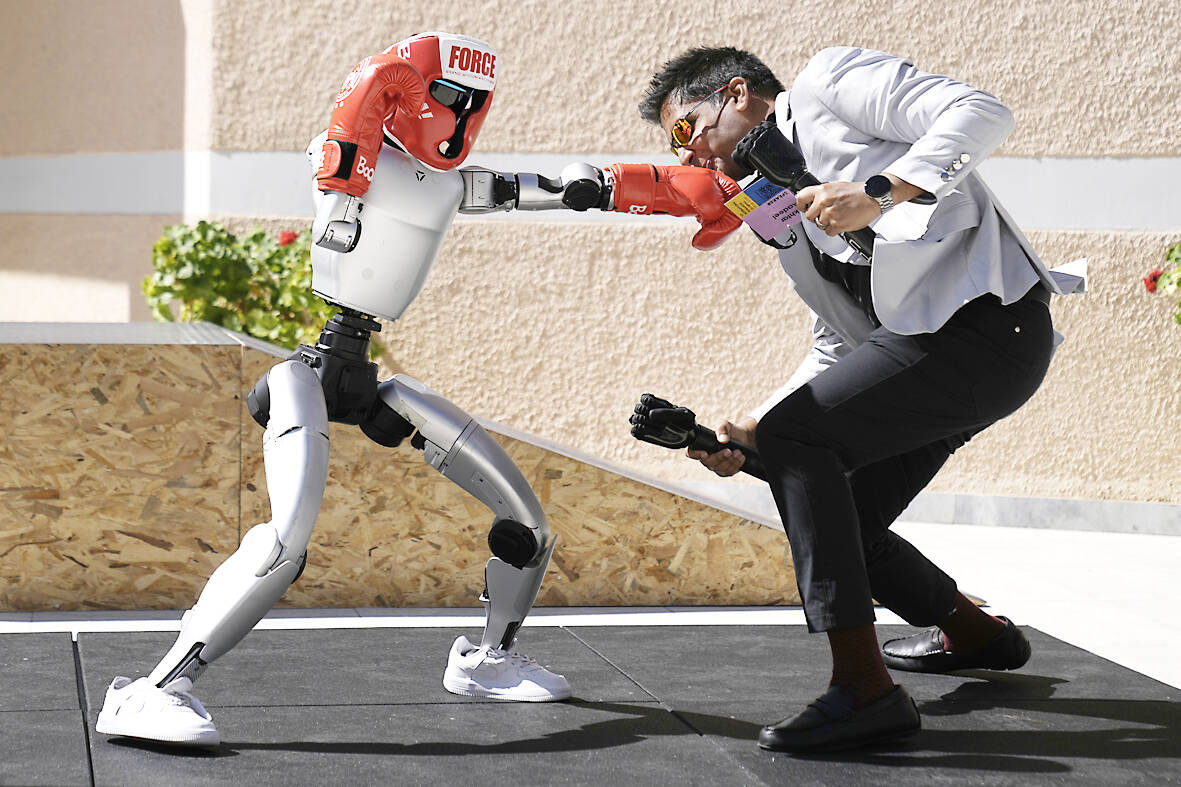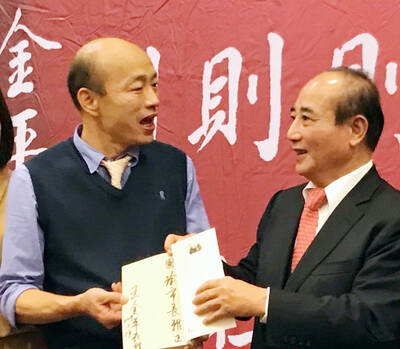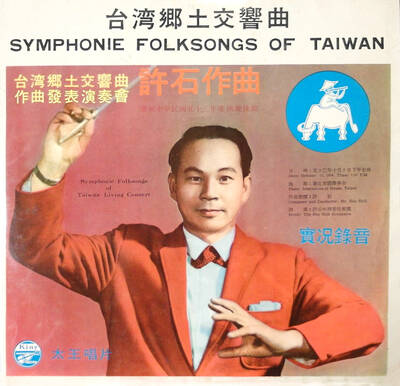With jerky determination, robots played soccer, wowed children with shadow-boxing skills and shot arrows on Monday at the birthplace of the Olympic Games.
As they shuffled and occasionally froze for a battery change, their creators and futurologists debated the central question of when robots will be ready to tidy closets and wash dishes.
OUTER SPACE BEFORE HOUSE CHORES

Photo: AP
Despite the explosive advance of artificial intelligence in applications like ChatGPT, their physical cousins — robots with human-like appearances and skills — are lagging years behind.
“I really believe that humanoids will first go to space and then to houses … the house is the final frontier,” said Minas Liarokapis, a Greek academic and startup founder who organized the International Humanoid Olympiad.
The four-day event gathered experts and developers at Ancient Olympia in southern Greece where the flame is lit every two years for the modern Summer and Winter Games.
“To enter the house it’ll take more than 10 years. Definitely more,” Liarokapis said. “I’m talking about executing tasks with dexterity, not about selling robots that are cute and are companions.”
TRAINING MATERIAL LACKING
AI is racing ahead thanks to vast amounts of data readily available online. But training material for humanoid robots is scarce. It involves real-world actions that are slower, more expensive and harder to record than digital data like text or images.
By one measure, humanlike robots are roughly 100,000 years behind AI in learning from data, according to an article in the current edition of the journal Science Robotics.
To catch up, author Ken Goldberg, a professor at the University of California, Berkeley, urged makers to move beyond simulations and combine “old-fashioned engineering” with real-world training. That, he argues, would let robots “collect data as they perform useful work, such as driving taxis and sorting packages.”
THE RACE FOR USEFUL DATA
Luis Sentis, professor of aerospace engineering and engineering mechanics at The University of Texas at Austin, said that successful robotics requires collaboration between researchers, data companies and major manufacturers to provide scale. Those partnerships, he noted, are already attracting billions of dollars in funding to develop humanoid robots.
“These synergies are happening very, very quickly. So I do see these problems being cracked on a day-to-day basis,” said Sentis, who’s also a co-founder of humanoid maker Apptronik.
Developers at the Greek event brought their own ideas.
Aadeel Akhtar, CEO and founder of advanced prosthetics maker Psyonic, gained international attention after appearing on the U.S. television show “Shark Tank” last year seeking investment for his company’s bionic hand, which offers sensory feedback.
That data, he said, could accelerate robot development.
“We’ve built our hand for both humans and robots,” he said. “So we’re closing that gap by actually using the hand of the prosthetic on humans and then translating that (data) over to robots.”
BRAIN CELLS
Hon Weng Chong, CEO of Cortical Labs, said that the Australian biotech company is developing a so-called biological computer that uses real brain cells grown on a chip. Those cells can learn and respond to information — and potentially teach robots to think and adapt more like humans.
At the Olympiad, organizers hoped to lay a foundation for annual competitions providing an “honest validation of the progress that has been made in humanoid robots,” said Patrick Jarvis, who with Liarokapis is co-founder of robot maker Acumino.
Organizers limited events to what humanoids could reasonably attempt.
“We were trying to get the discus and the javelin, but that’s tough for humanoid robots,” Jarvis said. “We also can’t say whose robot can do a high jump because you’d have to build special legs … and that’s not necessary for most humanoid robots.”
CHINA KEEN TO DISPLAY ROBOTS, US LESS SO
One company even tested whether its machine could manage the shot put, said Thomas Ryden, executive director of MassRobotics, who worked to “get as many humanoid companies there as possible.”
In the end, several US roboticists came to Greece to speak, but few brought robots.
Chinese companies increasingly showcase their machines at public events, such as Beijing’s first Humanoid Robot Games in August, while US rivals mostly stick to polished videos that can mask failures.
There are exceptions. Elon Musk revealed Tesla’s Optimus in 2022: The prototype walked stiffly onstage, turned and waved to a cheering crowd.
Boston Dynamics went further. Ten years after launching its dog-like Spot, the company had them dance in synchrony to a Queen song on America’s Got Talent.
One of the five broke down mid-routine, creating a reality-show punchline, but also highlighting their agility and coordination.
“Can I be honest with you? I actually think — I don’t mean this in a cruel way — it was weirdly better that one of them died,” judge Simon Cowell said. “Because it showed how difficult this was.”

The depressing numbers continue to pile up, like casualty lists after a lost battle. This week, after the government announced the 19th straight month of population decline, the Ministry of the Interior said that Taiwan is expected to lose 6.67 million workers in two waves of retirement over the next 15 years. According to the Ministry of Labor (MOL), Taiwan has a workforce of 11.6 million (as of July). The over-15 population was 20.244 million last year. EARLY RETIREMENT Early retirement is going to make these waves a tsunami. According to the Directorate General of Budget Accounting and Statistics (DGBAS), the

Last week the Chinese Nationalist Party (KMT) announced that the legislature would again amend the Act Governing the Allocation of Government Revenues and Expenditures (財政收支劃分法) to separate fiscal allocations for the three outlying counties of Penghu, Kinmen and Matsu from the 19 municipalities on Taiwan proper. The revisions to the act to redistribute the national tax revenues were passed in December last year. Prior to the new law, the central government received 75 percent of tax revenues, while the local governments took 25 percent. The revisions gave the central government 60 percent, and boosted the local government share to 40 percent,

Many will be surprised to discover that the electoral voting numbers in recent elections do not entirely line up with what the actual voting results show. Swing voters decide elections, but in recent elections, the results offer a different and surprisingly consistent message. And there is one overarching theme: a very democratic preference for balance. SOME CAVEATS Putting a number on the number of swing voters is surprisingly slippery. Because swing voters favor different parties depending on the type of election, it is hard to separate die-hard voters leaning towards one party or the other. Complicating matters is that some voters are

Sept 22 to Sept 28 Hsu Hsih (許石) never forgot the international student gathering he attended in Japan, where participants were asked to sing a folk song from their homeland. When it came to the Taiwanese students, they looked at each other, unable to recall a single tune. Taiwan doesn’t have folk songs, they said. Their classmates were incredulous: “How can that be? How can a place have no folk songs?” The experience deeply embarrassed Hsu, who was studying music. After returning to Taiwan in 1946, he set out to collect the island’s forgotten tunes, from Hoklo (Taiwanese) epics to operatic